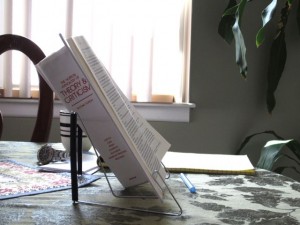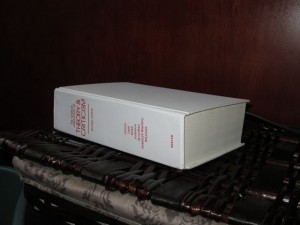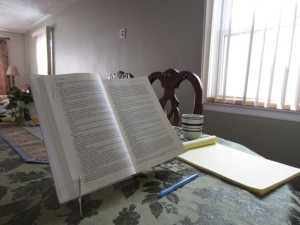There’s a common problem plaguing english grad students — in fact, it may have spread to all students generally. It is a problem oft dismissed as irrelevant; never talked about; never addressed, and students suffer alone when confronting it. I of course refer to this:
The 3,000 page neck-aching Norton Anthologies: textbooks that work your mind as well as your forearms. Pictured here is my Norton Anthology of Theory and Criticism. Just look at it! It laughs at your futile attempts to read it comfortably. The first 500 pages or so are by far the worst of the experience — the book constantly shutting from the stress on its binding. Sometimes I look forward to mid-semester only because the book balances better on a table. Word of caution: do not attempt to read this book in bed, unless you have two spotters (very few people do). If you read it in a chair with your lap (which sounds reasonable) you will find your eyes cannot make out the micro-print typeface. The book must be 10-12 inches from the eyes, and the only way to accomplish this is on a flat table, with your neck precariously hinged, taking frequent breaks to relieve the stressors on said neck.
Fortunately, that has all changed. I’ve finally discovered a more comfortable way to read this book! I never thought I’d see this day, but alas: Behold, the book holder!

This ingenious device props books upright allowing it to be read easily at eye-level, relieving neck stress, minimizing head movements, and overall providing a more comfortable and healthy reading posture for uber-large textbooks.
In my mind, this is a revolutionary find (though, apparently a hushed secret among law students who have known about it for years: damn lawyers and their secret clubs!). I bought mine from Amazon for about 8$ and love it. It has already dramatically improved my reading experience, and as result, no doubt will seep into better grades. Simply search for “book holder” on Amazon and always remember who showed you the way 😉
[wp_ad_camp_2]



